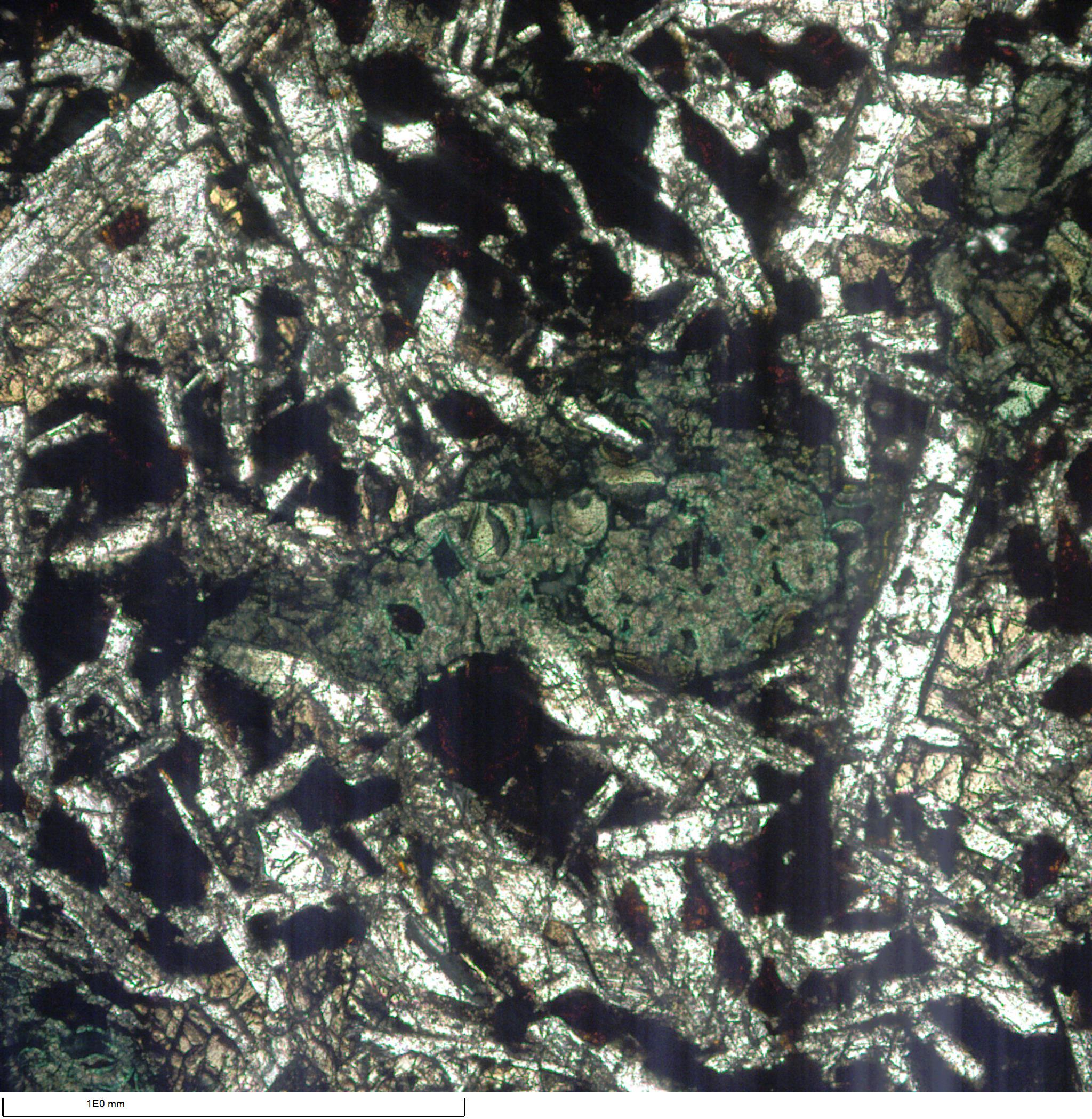Science Art Gallery: Thin section 1
Thin sections are hair thin slices of hard rock used to understand the grain size, types of minerals, types of stress applied to the rock and more. It is a microscopic tool as petrologists investigate the hard rock cores pulled from the seafloor. The petrologists use a specialized microscope with two different lights sources, a rotating slide base, and high magnification lenses to see these small characteristics.
The different light sources are known as transmitted uncrossed polarized or transmitted crossed polarized. The uncrossed polarization shoots a light through a polarizer (type of filter) through the glass slide and it lights up the glass slide from below, while the crossed polarized light shoots light at two perpendicular angles and becomes bent when the glass slide is present. When the light is bent, the image of the glass slide is visible. The image results in different colors to show up or not show up which helps with mineral identification.
So what does the petrologist see in the thin section? Scientifically what is seen in this thin section is under crossed polarization there is fine grained basalt with plagioclase (white) clinopyroxene (yellowish) and oxides (red/black) and secondary chlorite (green).
But tell us what you see in the image below. Does it remind of something you have seen in the past or do you see an abstract image? Leave your answer in the comments!

Click here to return to the main page of the Science Art Gallery.